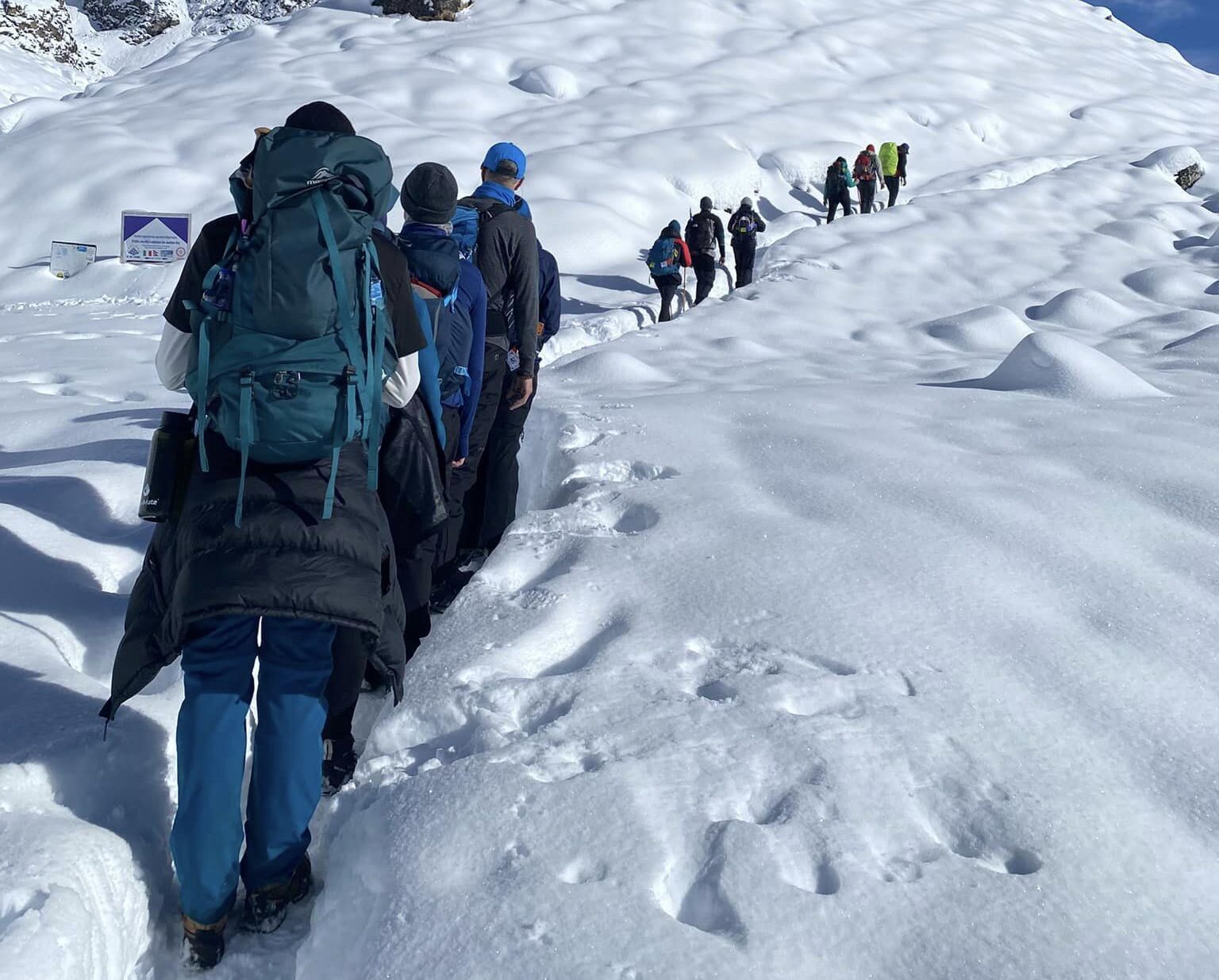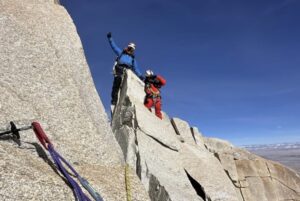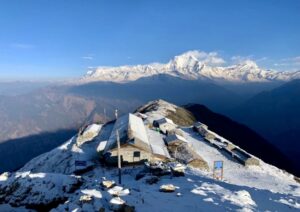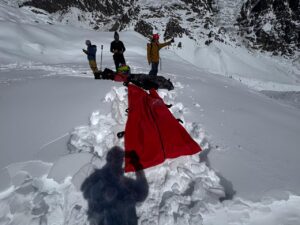“Should I cancel my trip to Nepal?” Hikers around the world planning to travel to the Himalaya in the next few days are sharing their concerns on social media after the monster rains that swamped parts of the country and loaded mountain areas with snow.
The answer is that they will be fine as long as they are patient and flexible.
Airports are open, and roads blocked by mud and landslides are quickly being cleared. Life in Kathmandu continues, and locals are ready, as always, to welcome tourists.
Khumbu snow
As for the mountain areas, yes, there’s a lot of snow everywhere. In the Khumbu, some groups had to turn around at Lobuche, but the situation will improve in the days ahead. However, those hoping to climb trekking peaks such as Imja Tse, Mera Peak, Baruntse, or Lobuche East may have to wait. Yousef Al-Nassar from Kuwait, who hopped to climb Kiajo Ri, could not go further than Base Camp.
Trekkers to Everest Base Camp will have to deal with the conditions shown in the photo below:
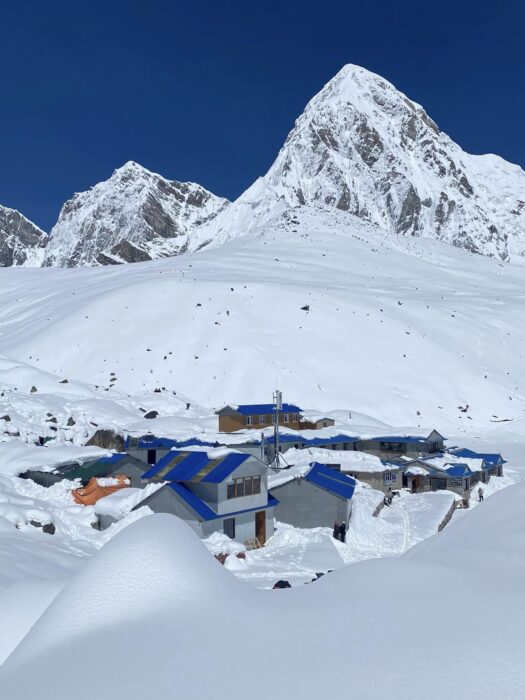
Gorak Shep, near Everest Base Camp, half-buried in fresh snow. Pumori is in the background. Photo: Dikesh Basnet
“We recommend that trekkers bring mini-crampons,” Roland Hunter of The Mountain Company told ExplorersWeb. “That will make the going easier on trails if they are icy or covered with packed snow.”
Delays and avalanche risk
The problem may be finding a seat on the limited flights to Lukla and back. Planes are often delayed, and there are big backlogs in Kathmandu, Ramechap, and Lukla.
Let’s also remember that the trekking season has just started. Early birds might experience the last of the monsoon rains, especially as the global climate has changed.
“As the monsoon has been finishing later and later each year, we now start our lodge-based treks after the middle of October,” Hunter said.
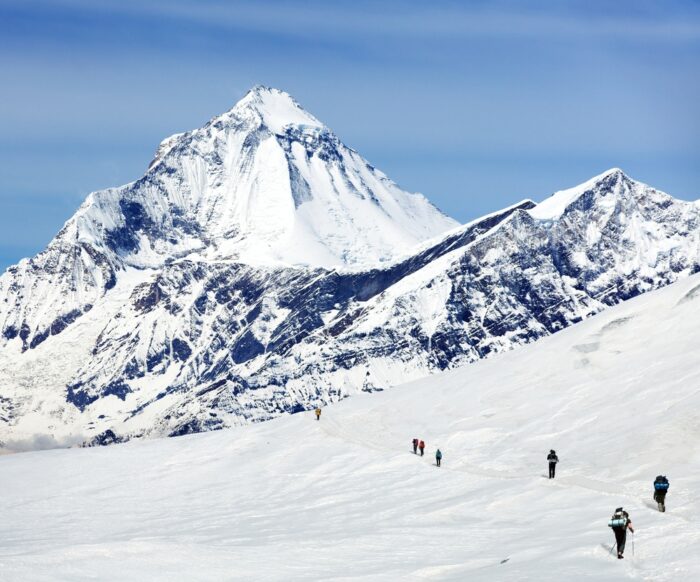
Trekkers approach Damphus Pass, with Dhaulagiri in the background. Photo: Shutterstock
The outfitter also noted that the main risk right now is not in open trails such as the one leading to Everest Base Camp but on mountain passes prone to avalanches.
“We have just canceled our Dhaulagiri Circuit trek due to the risk of avalanches on Dhampus Pass…We are redirecting our Dhaulagiri trekkers to the Annapurna circuit,” Hunter said.
